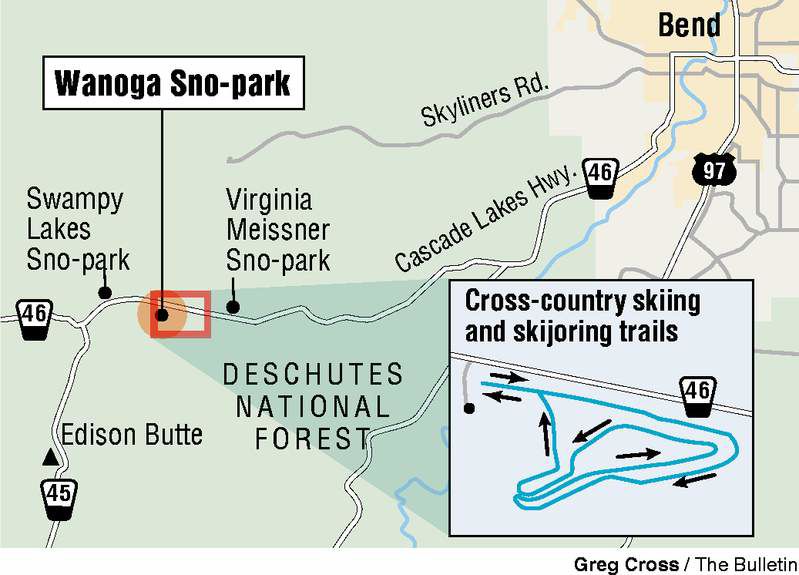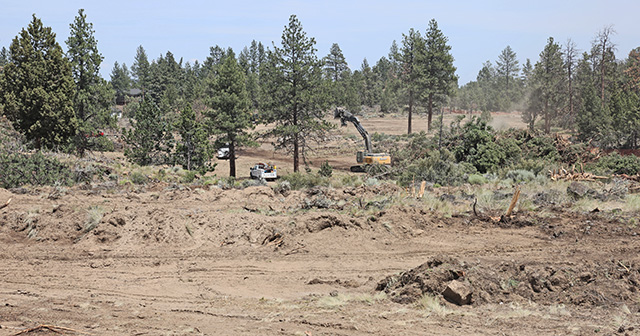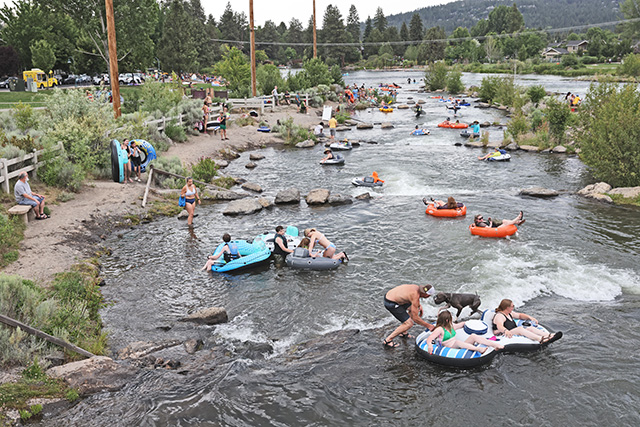Skijoring: A way to ski with your dog
Published 4:00 am Thursday, December 29, 2011

- Skijoring: A way to ski with your dog
I don’t understand why more people don’t skijor around here. It seems like Bend is full of people who love their dogs almost as much as they love cross-country skiing.
Skijoring is when you’re on cross-country skis and rigged to your dog with harnesses and a towline. It can be insanely thrilling if the dog pulls hard and you’re maneuvering between trees and other large, hard, fixed objects. It can also be an exercise in laziness, if you’re letting your dog power your momentum on a pretty tame trail.
When I lived in Anchorage, Alaska, skijoring was almost as common as trail running is here. Maybe it’s the workout factor. Bend people can be pretty bent on maximized workouts and calculated heart rates. Skijoring feels a little like cheating.
During my first trimester of pregnancy — when I had the energy of a Pacific Northwest slug — it was a great way to get outside. Kenai was a strong, 65-pound Labrador-shepherd mutt (we think) with crazy, endless energy in the snow. But that was seven years ago. Now she’s 10, a little fatter and a lot less active. I wondered if she would still be inclined to pull, and whether it was cruel to expect her to. But I grabbed my gear and went to the groomed dog-friendly ski trails at Wanoga Sno-park, expecting her to lag. Instead, she humbled me.
First of all, conditions were a little dicey, though Wanoga has received some snow since then. When I went, snow cover was thin and — since trees shade the first short stretch of trail — it was rock-hard and slick. As soon as I harnessed and latched us together, Kenai bolted straight down the trail like the 3-year-old she used to be and I found myself snowplowing against the ice with everything I had to resist her speed.
Then, she pulled a classic move I had forgotten about. With sudden and spontaneous inspiration, Kenai will stop and roll and wriggle in the snow, presumably because the harness she’s unaccustomed to itches or feels like something stuck in her fur, and this time, I just about impaled her with my skis. We tangled in the towline and tumbled into a pileon the ice. The bruise is growing on the outside of my right knee as I write.
I got up, and she bolted down the trail again. We survived two miles of track, stop and go, between bouts of rolling and wriggling and untangling her legs from the towline. Lots of sticks and twigs poked through the snow along the way, and inconsiderate pedestrians have post-holed footprints in the groomer’s wake, all adding to the challenge.
Most of Wanoga’s trails wind through openings in the trees. After the first few hundred yards in the shade, the snow was surprisingly nice. The ungroomed fields of snow just off the tracks were excellent. But Kenai needed the track to guide her, or else she would just stop and look at me like, “Where am I supposed to go?” Perhaps if I had trained her properly with directional commands I could guide her through Wanoga like Rachael Scdoris across the frozen tundra. Instead, we returned to the curvy, double-loop trail that’s groomed and marked by blue diamonds and bamboo poles.
Logistics
At Wanoga, trail maintenance is done periodically by volunteers. A member of the group DogPAC donates the use of an ATV and groomer. Wanoga is one of the best accessible day outings for skijoring, although Tumalo Falls can be a close competitor when there is more snow.
Wanoga is an off-leash area, so you won’t get any grief about letting your dog run around. You are supposed to keep dogs on a leash in the parking area and near the sledding hill.
Off-leash dogs are banned on the north side of Century Drive. On a skijor line, dogs are allowed in some backcountry if you get a free permit from the U.S. Forest Service.
If you want to skijor, you’ll need a dog harness, a human hip belt, and the bungee towline that connects the two. We bought ours at some outdoor gear store in Anchorage ages ago.
In late November at REI, Greg Freyberg, an enthusiastic skijorer and employee of local canine gear-maker Ruff Wear (www.ruffwear.com), showed off a new line of lightweight and high-tech skijoring gear that included adjustable harnesses, a change from custom-made-to-order harness systems. The price for Ruff Wear’s complete system is $150. Slightly less expensive setups are available online; just Google “skijoring equipment” to find them.
The gear seems like a lot to think about at first. I’d recommend feeling pretty solid on skis before heading out strapped to a strong, fast dog. I’d also recommend practicing the emergency release mechanism a few times before you really need it. The towline connection at the hip belt has an easy-release pulley that frees the dog in an instant.
Freyberg also discussed how to train dogs to pull, which is not always a natural instinct for a dog. Ideally, a skier would train a dog from its youth, although the rigorous physical activity of pulling is not recommended until at least 1 year old, or older for a larger breed. Freyberg said you don’t have to have a classic husky or malamute, or the ubiquitous Labrador retriever — even a Labradoodle will do.
Training your dog
Start training the puppy by putting it in a harness and letting it run with you as you ski. As the dog gets older or stronger, let it pull a weighted line attached to his harness, to teach the dog that wearing a harness means “pull.” Eventually, connect the towline to the harness on your body. At first, it’s helpful to join other skijorers or have someone run or ski ahead and call the dog.
Some people use standard commands: “Gee” means go right and “Haw” means go left. “On by” means pass the distraction and keep going. But Freyberg has established his own language. “Whatever your word is, pick it and use it,” he said.
I call “Let’s Go!” to make Kenai run, and “Heel,” when I want her to chill out and run next to me. Basically, I’m at the mercy of God.
There is some debate about which kind of skis are best for skijoring, because the metal edges on backcountry touring skis could potentially cut your dog if you accidentally run into it. On my recent day at Wanoga, I opted for backcountry touring skis and I was glad, because of spotty snow conditions. My skate skis would have been harder to maneuver around all the obstacles in the trail, and their bases are more fragile.
I’ll skijor again as snow begins to pile up. The challenges will ease with practice. I love how happy Kenai gets when she’s running in the snow. When we got home, she didn’t follow me from room to room, shooting me with laser beams of guilt. Instead of begging for some exercise, she rested on her bed. I swear she was smiling.
Wanoga Sno-park
Getting there: Drive west on Century Drive toward Mt. Bachelor. Past milepost 14 and Virginia Meissner Sno-park. Wanoga Sno-park is on the left. The dog-friendly ski trail is in the sno-play area, to the left. The trailhead is on the opposite side of the parking lot from the sledding hill.
Difficulty: Terrain is easy. Skijoring can seem complicated at first, depending on experience.
Cost: Sno-park pass required at trailhead; $3 per day, $7 for a three-day pass or $20 for the season. Passes are available from Oregon Department of Motor Vehicles and local sporting goods stores.
More info: www.oregon.gov/ODOT/DMV/vehicle/sno_park_permits.shtml
Contact: Bend Fort Rock Ranger District, 541-383-4000
Information
For more details about skijoring and Wanoga Sno-park:
• Pacific Sled Dog and Skijor Association (http://psdsa.org/#Skijoring)
• DogPAC (http://dogpac.org/wintertrails.html)
For information about a upcoming “winter trails day” event at Wanoga Sno-park, which will include skijor gear demos from Ruff Wear:
• REI (www.rei.com/event/33088/session/41449)







